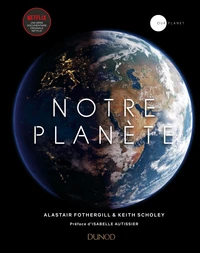The AAAS Atlas of Population and Environment is an important analysis of the relationships between human population and the environment. Illustrating through text, maps, and diagrams how population factors such as rates of growth, density, movement, resource consumption, and the use of certain technologies affect the world's ecosystems and natural resources both in the short and long term, the Atlas brings together a wealth of information from the most up-to-date sources. In view of the profound significance of these issues as we enter the new century, this accessible resource will be an invaluable tool for individuals, academics, governments, and corporations.
This pathbreaking book tackles the difficult job of connecting the social and natural sciences to provide a thorough and sound analysis of the interplay between population and the environment. Its interdisciplinary approach brings a unique comparative perspective to the discussion and makes it pertinent to a broad range of disciplines.
The Atlas draws on research and data from a number of academic institutions and international organizations, including the United Nations and its specialist organizations and agencies; the World Resources Institute; the Center for International Earth Science Information Network; the Oak Ridge National Laboratory; the U.S. Geological Survey; and the UNEP World Conservation Monitoring Centre. Using sophisticated mapping and graphic techniques, it provides quantitative analyses of the important links between human population density, rates of growth, migration, resource consumption, technologies. and the state of the global environment. White the impact of people on the environment may have seemed intuitively obvious in the past, the Atlas makes accessible a wealth of badly needed empirical evidence that wilt be invaluable for both specialists and general readers.
The AAAS Atlas of Population and Environment is an important analysis of the relationships between human population and the environment. Illustrating through text, maps, and diagrams how population factors such as rates of growth, density, movement, resource consumption, and the use of certain technologies affect the world's ecosystems and natural resources both in the short and long term, the Atlas brings together a wealth of information from the most up-to-date sources. In view of the profound significance of these issues as we enter the new century, this accessible resource will be an invaluable tool for individuals, academics, governments, and corporations.
This pathbreaking book tackles the difficult job of connecting the social and natural sciences to provide a thorough and sound analysis of the interplay between population and the environment. Its interdisciplinary approach brings a unique comparative perspective to the discussion and makes it pertinent to a broad range of disciplines.
The Atlas draws on research and data from a number of academic institutions and international organizations, including the United Nations and its specialist organizations and agencies; the World Resources Institute; the Center for International Earth Science Information Network; the Oak Ridge National Laboratory; the U.S. Geological Survey; and the UNEP World Conservation Monitoring Centre. Using sophisticated mapping and graphic techniques, it provides quantitative analyses of the important links between human population density, rates of growth, migration, resource consumption, technologies. and the state of the global environment. White the impact of people on the environment may have seemed intuitively obvious in the past, the Atlas makes accessible a wealth of badly needed empirical evidence that wilt be invaluable for both specialists and general readers.
